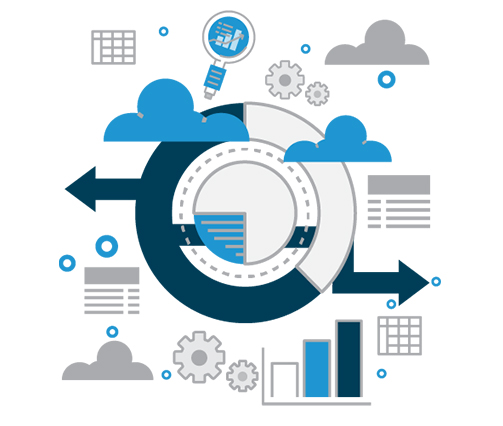about us
About xTend
xTend is a digital transformation company with a focus on consulting, individual software development and integrating software into government and private core business processes. xTend strategy is built on three pillars: its employees’ comprehensive industry expertise, a broad range of technological skills and proven methods for implementing projects. This approach provides companies with IT solutions that boost their competitiveness. xTend employees are entrepreneurial thinkers with excellent communication skills.

vision and mission
Our mission is to offer total next generation digital transformation and innovation solutions.
xTend supports enterprises in achieving transformation goals acting as a backbone for digital solutions by connecting systems and processes to the people.
Xtend Methodology
The BRAVE Framework
BRAVE is a five step framework for charting the digital transformation journey – from inception to implementation. Depending upon the industry or current state, not all elements of this framework will be relevant to every company. However, it can be tailored to fit your business needs. The five stages are:

1. BOOTUP: Launch the Digital Transformation Journey
- Identify key stakeholders in the organization.
- Conduct deep dive workshop to define the vision, goals and objectives of digital transformation.
- Identify a person to lead the transformation program.
- Research current and future impact of digital in the relevant industry.
- Define preliminary budget.
2. ROLE RESOURCES: Identify Roles and Acquire Essential Resource Required
- Create a role of ‘Chief Digital Officer’ who will lead this transformation initiative.
- Create a dedicated digital transformation team with clearly defines roles, responsibility and accountability. This should be a cross-functional team.
- Identify external partners who will bring in the relevant consulting, professional services or technology expertise.
3. ANALYZE: Analyze the Current State of Organization Digital Maturity
Conduct comprehensive objective analysis of ‘As-Is’ state across organization. The twin parameter which is used to gauge each aspect is ‘Customer Experience Excellence’ and ‘Operation Excellence’.
- Analyzing current and future state of business and IT landscape.
- Analyze the business architecture for each of the business divisions and departments that have a touch point with IT.
- A conceptual view of the business broken down into key functions and processes.
- Map business processes and applications, discover overlapping/singleton applications, and discover redundant processes and applications.
- IT landscape analysis which comprises applications, data and infrastructure to support business requirements.
4.VALUATE: Valuate and Prioritize to Chart a Transformation Roadmap
Depending on the current status, organizations will fall in one of the four quadrants.
Transformation roadmap should be laid out with time span of 12-15 months with intermediate milestones and with well-defined project timelines. One has to deliver prioritization roadmap for the application portfolio with the key indicators mapped to ROI and business.
Application portfolio will contain short-term to long-term priorities.

5. EXECUTE: Execute the Strategic Transformation Roadmap with Continuous Feedback
The key implementation tracks are as follows:
Governance
- Create an organization structure with required competencies and clearly defined roles.
- Organization structure should be flexible, agile and foster collaboration between different teams.
- Establish ownership of programs and initiatives.
Change Management
- Well defined periodic communication from senior leadership throughout the organization about the transformation.
Technology CoE (Cost of Operation)
- Create CoE for relevant Digital technologies (Cloud, IoT, Big Data, Mobility, Artificial Intelligence, Machine Learning etc.) that are being leveraged. As most of these technologies are still new and getting enhanced continuously, a dedicated team doing proof of concept and keeping themselves abreast of latest changes will help in faster implementation.
Digital Business Architecture
Define organization business flow architecture which comprises:
- Compelling customer experience, based on previous analysis of customer journeys.
- Digitizing and automation of business process.
Digital Platform Technology Architecture
Establish an Enterprise Architecture which should be Extensible for Digital Business Architecture
- Break the transformation journey into logical streams and identify detailed requirements and conceptual architecture for each stream.
- Compare technical options for each stream, based on identified criteria and recommend a solution.
UI/ UX
- Establish well defined UI/UX guidelines and style guides.
- UI/ UX should be designed and developed for omni-channel. ( mobile, laptop, desktop)
Development Methodologies and DevOps
The wide array of digital technologies at our disposal have created a lot of opportunities, use cases which were not thinkable few years back but are possible now. You are able to simultaneously, create business capabilities: increase operation efficiency, enhance customer engagement, develop new business model, new product on and so on. To leverage the full potential of digital, organizations can rely on their endeavors to achieve the desired goals and yes, braveness backed up by well thought out plan.



Endure needs to be the delight of our customers by achieving perfection in our processes and quality method.